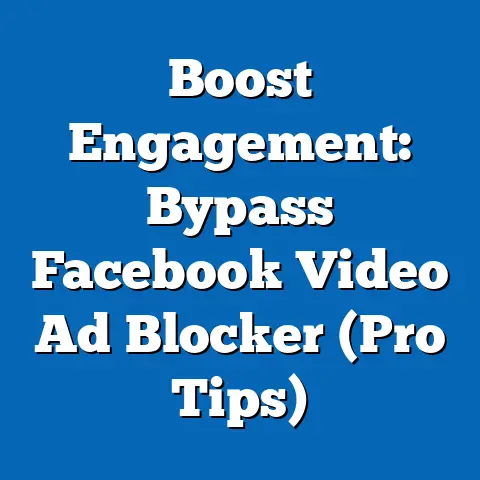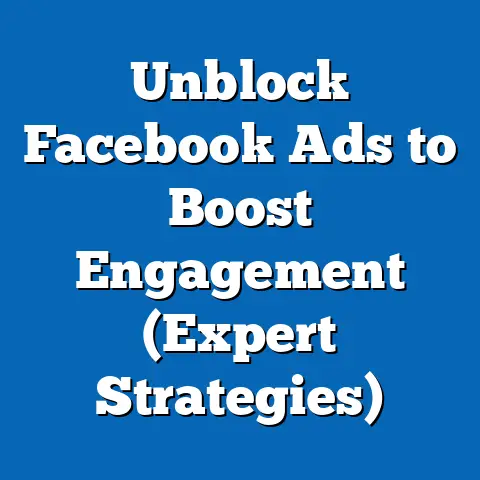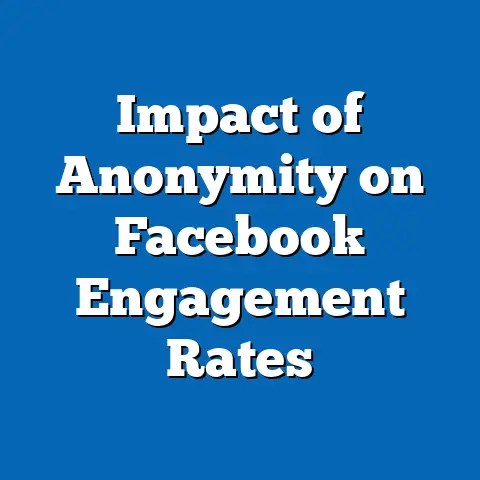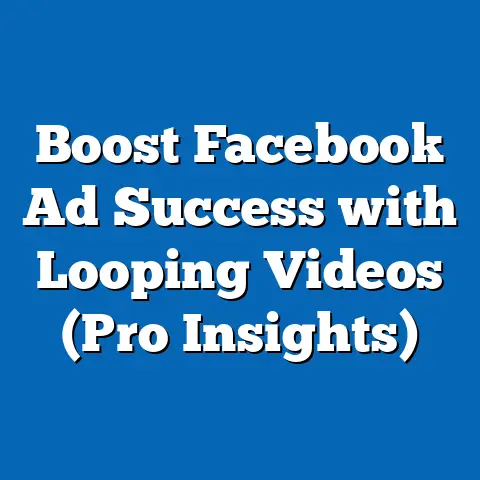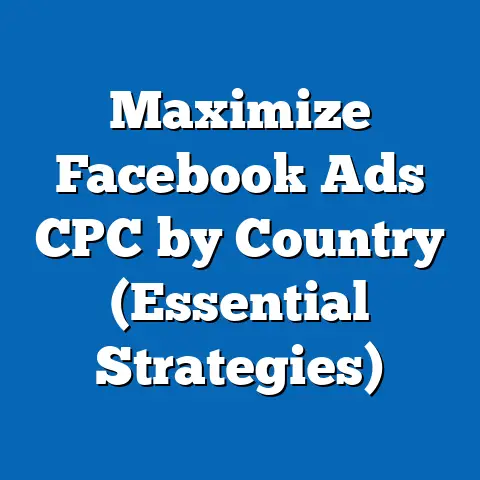Stop Annoying Facebook Ads Today (Expert Removal Strategies)
Facebook. It’s where I connect with family, stay updated on my friends’ lives, and occasionally get sucked into a vortex of cat videos. But let’s be honest, it’s also become a minefield of advertisements – some helpful, some utterly irrelevant, and some downright annoying. It’s a double-edged sword: a platform for meaningful connections and a source of constant interruptions through ads that often miss the mark. I know I’m not alone in feeling this way. We’re all a little tired of seeing ads that have nothing to do with our interests, pop up way too frequently, or just plain make no sense. That’s why I’ve put together this guide: to give you the power to take back your Facebook feed and eliminate those annoying ads once and for all.
This isn’t about hating on Facebook or even advertising in general. I understand that ads are how Facebook stays afloat. But that doesn’t mean we have to suffer through a barrage of irrelevant and intrusive marketing messages. In this article, I’ll walk you through expert strategies to minimize the annoyance and reclaim a more enjoyable Facebook experience. Let’s dive in!
Understanding Facebook Ads
Before we jump into the removal strategies, let’s get a basic understanding of what Facebook ads are and how they work. Essentially, Facebook ads are paid messages that businesses use to reach specific audiences on the platform. They come in various formats, from simple image ads to more engaging video ads and carousel ads.
But what determines which ads you see? That’s where the magic (or the madness, depending on your perspective) of algorithms comes in. Facebook’s ad targeting is based on a complex system that analyzes your:
- Demographics: Age, gender, location, education level, etc.
- Interests: Pages you’ve liked, groups you’ve joined, topics you’ve engaged with.
- Behaviors: Websites you’ve visited, apps you’ve used, purchases you’ve made.
- Connections: Your friends and their interests.
This data is then used to create a profile of you, which advertisers can use to target their ads. The goal is to show you ads that are relevant to your interests, but sometimes, the algorithm gets it wrong. This is where the annoyance creeps in.
Why are Facebook ads so annoying sometimes?
- Poor Targeting: The advertiser hasn’t accurately defined their target audience, so you’re seeing ads that simply don’t apply to you. I’ve seen ads for retirement homes targeted at me, a millennial, more times than I can count!
- Frequency: You’re seeing the same ad over and over again, even if you’ve already purchased the product or service being advertised. This is a classic case of ad fatigue.
- Lack of Relevance: The ad is for a product or service that you have absolutely no interest in, based on your past behavior or expressed preferences.
- Intrusive Format: Some ad formats, like pop-up video ads, can be particularly disruptive and annoying.
- Misleading Content: Ads that use clickbait or false claims to entice clicks can be infuriating.
Takeaway: Understanding how Facebook ads work and why you’re seeing certain ads is the first step to taking control of your ad experience. Next, we’ll look at the impact these annoying ads have on you.
The Impact of Annoying Ads
It’s easy to dismiss annoying ads as a minor inconvenience, but their impact can be more significant than you might think. The constant barrage of irrelevant or intrusive ads can have a real psychological and emotional effect.
Think about it: you’re scrolling through Facebook, trying to relax and connect with friends, and suddenly you’re bombarded with ads that are completely irrelevant to your life. This can lead to:
- Frustration and Anger: It’s annoying to be constantly interrupted by ads that don’t interest you.
- Ad Fatigue: Seeing the same ads repeatedly can lead to a feeling of being overwhelmed and burned out.
- Negative Brand Perception: If a brand is consistently showing you annoying ads, you’re likely to develop a negative impression of that brand. This can affect your purchasing decisions in the future.
- Decreased Engagement: You might start spending less time on Facebook or become less engaged with the content you see.
- Privacy Concerns: Seeing ads that seem to know too much about your personal life can be unsettling and raise concerns about your privacy.
Statistics on User Engagement and Ad Fatigue:
- Studies have shown that ad fatigue can set in after seeing the same ad just a few times.
- A significant percentage of users report feeling annoyed by irrelevant or intrusive ads.
- Negative sentiment towards brands that persistently advertise is on the rise.
Real-Life Examples:
I remember one time, I was constantly seeing ads for a weight loss product, even though I had never expressed any interest in weight loss. It made me feel self-conscious and annoyed, and I ended up blocking the brand altogether.
I’ve also heard countless stories from friends and acquaintances who have had similar experiences. One friend told me she was constantly seeing ads for baby products, even though she had no children and wasn’t planning on having any. She found it incredibly frustrating and even a bit insensitive.
Takeaway: Annoying ads aren’t just a minor inconvenience; they can have a real impact on your mood, your perception of brands, and your overall Facebook experience. Now, let’s get into the strategies you can use to fight back.
Here are some expert strategies you can use to stop those annoying Facebook ads and reclaim your feed:1. Adjusting Ad Preferences
This is your first line of defense. Facebook allows you to customize your ad preferences, which can significantly impact the types of ads you see. Here’s how to do it:
- Go to your Facebook settings: Click the down arrow in the top right corner of Facebook and select “Settings & Privacy,” then “Settings.”
- Click on “Ads”: In the left-hand menu, click on “Ads.”
- Review your interests: Under “Advertisers and Businesses You’ve Interacted With,” you’ll see a list of topics that Facebook thinks you’re interested in. Remove any that are irrelevant or incorrect.
- Adjust your ad settings: Under “Ad Settings,” you can control things like:
- Ads based on data from partners: This allows Facebook to use data from websites and apps you’ve visited to target ads to you. I recommend turning this off.
- Ads shown outside of Facebook: This allows Facebook to show you ads on other websites and apps. You can also turn this off.
- Social actions: This allows Facebook to use your likes and shares to show ads to your friends. You can limit this to “Only Me.”
- Ads based on data from partners: This allows Facebook to use data from websites and apps you’ve visited to target ads to you. I recommend turning this off.
- Ads shown outside of Facebook: This allows Facebook to show you ads on other websites and apps. You can also turn this off.
- Social actions: This allows Facebook to use your likes and shares to show ads to your friends. You can limit this to “Only Me.”
Why is this important?
By customizing your ad preferences, you’re essentially telling Facebook what you’re not interested in. This can help to filter out irrelevant ads and improve the overall quality of your ad experience.
My Experience:
I spent some time going through my ad preferences and was surprised to see how many outdated or incorrect interests were listed. I removed a bunch of them, and I immediately noticed a difference in the types of ads I was seeing.
Next Step: Take some time to review your ad preferences and remove any irrelevant or incorrect interests.
2. Utilizing the Ad Feedback Tool
Whenever you see an ad on Facebook, you have the option to provide feedback on it. This is a powerful tool that can help to improve the relevance of the ads you see. Here’s how to use it:
- Click the three dots in the top right corner of the ad.
- Select “Why am I seeing this ad?”
- Provide feedback: You can choose from a variety of options, such as “It’s not relevant to me,” “I see it too often,” or “It’s offensive.”
Why is this important?
By providing feedback, you’re telling Facebook that the ad is not relevant to you. This helps the algorithm to learn what types of ads you don’t want to see and to improve its targeting.
My Experience:
I make it a habit to provide feedback on any ads that I find irrelevant or annoying. I’ve noticed that the more feedback I provide, the better the ads I see become.
Next Step: Start providing feedback on the ads you see on Facebook, especially those that you find irrelevant or annoying.
3. Employing Browser Extensions
Browser extensions can be a powerful tool for blocking or filtering Facebook ads. There are many different extensions available, each with its own set of features and benefits. Some popular options include:
- AdBlock: A general-purpose ad blocker that can block ads on Facebook and other websites.
- AdBlock Plus: Another popular ad blocker with similar features to AdBlock.
- uBlock Origin: A lightweight and efficient ad blocker that uses minimal resources.
- Facebook Ad Remover: Specifically designed to remove ads from Facebook.
How do these tools work?
These extensions work by identifying and blocking the code that displays ads on Facebook. They can also block other types of tracking and privacy-invasive elements.
My Experience:
I’ve used various ad blockers over the years, and I’ve found them to be very effective at removing ads from Facebook. They can significantly improve your browsing experience.
Important Note:
While ad blockers can be very effective, they can also interfere with the functionality of some websites. It’s important to choose an ad blocker that is reputable and well-maintained.
Next Step: Install a browser extension that can block or filter Facebook ads.
4. Ad Blockers for Mobile Devices
If you primarily use Facebook on your mobile device, you can also use ad blocker apps to block ads. These apps work by filtering out ad traffic before it reaches your device. Some popular options include:
- AdLock: A system-wide ad blocker that can block ads in apps and browsers.
- Blocker: A Safari content blocker that can block ads on websites you visit in Safari.
- AdGuard: Another system-wide ad blocker with similar features to AdLock.
How do these apps work?
These apps typically work by creating a VPN connection on your device, which allows them to filter out ad traffic.
Important Note:
Ad blocker apps can drain your battery life, so it’s important to choose an app that is efficient and well-optimized.
Next Step: Install an ad blocker app on your mobile device.
5. Curating Your Feed
The content you engage with on Facebook can significantly impact the types of ads you see. By curating your feed, you can influence the algorithm to show you more relevant ads. Here’s how:
- Unfollow or mute pages that frequently post annoying ads: If you’re constantly seeing ads from a particular page, unfollow or mute that page.
- Engage with content that aligns with your interests: Like, share, and comment on content that you find interesting. This will signal to Facebook that you want to see more of that type of content.
- Join relevant groups: Joining groups that are related to your interests can help to improve the relevance of the ads you see.
- Hide posts you don’t like: If you see a post that you don’t like, hide it. This will tell Facebook that you don’t want to see similar posts in the future.
My Experience:
I’ve found that curating my feed is one of the most effective ways to improve the relevance of the ads I see. By unfollowing pages that post annoying ads and engaging with content that I find interesting, I’ve been able to significantly reduce the number of irrelevant ads I see.
Next Step: Start curating your feed by unfollowing pages that post annoying ads and engaging with content that aligns with your interests.
6. Changing Your User Behavior
Your behavior on Facebook, such as the posts you like, share, and comment on, can significantly influence the ads you see. The more you interact with content that aligns with your interests, the more likely you are to see relevant ads.
Here’s how to change your user behavior:
- Like posts that you find interesting: Liking posts tells Facebook that you want to see more of that type of content.
- Share posts that you think your friends would enjoy: Sharing posts tells Facebook that you find the content valuable.
- Comment on posts that you have something to say about: Commenting on posts tells Facebook that you’re engaged with the content.
- Avoid clicking on clickbait or misleading ads: Clicking on these types of ads will only encourage Facebook to show you more of them.
My Experience:
I’ve noticed that the more I interact with content that I’m genuinely interested in, the better the ads I see become. It’s like the algorithm is finally starting to understand me!
Next Step: Be mindful of your behavior on Facebook and make a conscious effort to interact with content that aligns with your interests.
The Future of Facebook Ads
The world of Facebook ads is constantly evolving. Facebook is always experimenting with new ad formats, targeting options, and algorithms. So, what does the future hold for Facebook ads?
Here are a few potential trends to watch out for:
- Increased use of artificial intelligence: AI is already playing a significant role in Facebook’s ad targeting and optimization. In the future, we can expect AI to become even more sophisticated, allowing for more personalized and relevant ad experiences.
- Focus on user privacy: In recent years, there has been growing concern about user privacy and data security. Facebook is under pressure to be more transparent about how it uses user data and to give users more control over their privacy settings. This could lead to changes in how Facebook targets ads.
- Emphasis on video ads: Video ads are becoming increasingly popular, and Facebook is investing heavily in video advertising. We can expect to see more video ads in the future, as well as new video ad formats.
- Integration with other platforms: Facebook is increasingly integrating its ad platform with other platforms, such as Instagram and WhatsApp. This allows advertisers to reach a wider audience and to create more seamless ad experiences.
Takeaway: The future of Facebook ads is uncertain, but it’s likely to be shaped by factors such as AI, user privacy, and the growing popularity of video ads.
Conclusion
Facebook ads are a necessary evil. They’re how Facebook makes money, and they can be a valuable tool for businesses to reach their target audiences. However, annoying ads can ruin your Facebook experience.
By implementing the strategies I’ve outlined in this article, you can take control of your ad experience and minimize the annoyance. Remember to adjust your ad preferences, provide feedback on irrelevant ads, use browser extensions and ad blocker apps, curate your feed, and change your user behavior.
While ads are an integral part of the platform, users have the power to minimize their annoyance with the right tools and techniques. Don’t let annoying ads ruin your Facebook experience. Take action today and reclaim your feed!
Call to Action
Now it’s your turn! What are your biggest frustrations with Facebook ads? Have you tried any of these strategies before? Share your experiences and insights in the comments below. Let’s start a conversation and help each other create a more enjoyable Facebook experience.
And if you found this article helpful, please share it with your friends who might be struggling with the same issues. Together, we can take back our Facebook feeds and eliminate those annoying ads once and for all!

